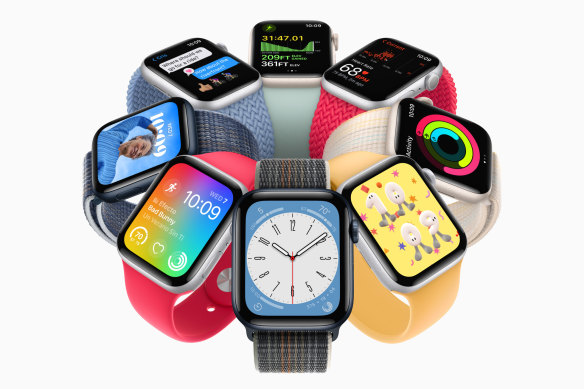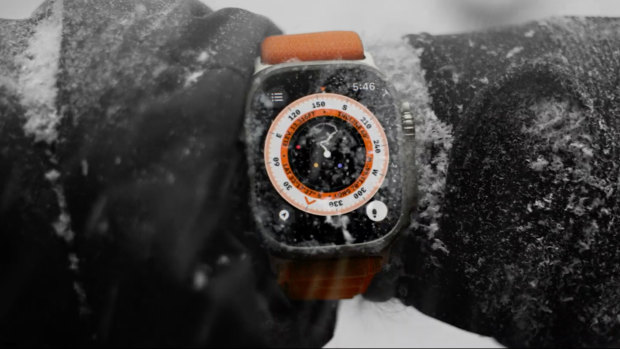
The second and third generations of the watch added GPS for location mapping, water resistance for swimming, an altimeter for climbing and a cellular connection for use independent of the iPhone.
The fourth and fifth added an electric heart sensor with ECG capabilities, fall detection, a compass and an always-on display. The most recent models have a sensor to monitor blood oxygen saturation, a thermometer to aid sleep and fertility tracking and the ability to tell if the user has been in a car crash.

The $400 Apple Watch SE keeps most of the functionality at a reduced price.
Since 2016, Apple has also been careful to always offer a less-expensive version of the watch, knowing that users who begin tracking their health with it are likely to buy new models in the future. According to Telsyte, the repeat purchase intention for Apple Watch in Australia is more than 80 per cent.
“One of the interesting things is that the replacement cycle of the Apple Watch is currently two years while the iPhone is over three years. [Dedicated customers] are more regularly buying watches than they are smartphones. So it represents an important recurring revenue source,” Fadaghi said.
“At the same time only 44 per cent of the loyal Apple base, that is users with five or more Apple products and services, have an Apple Watch. Which shows it still has more to do to win some over.”
And that may be why Apple, in addition to introducing the $630 Watch Series 8 and a new version of the $400 Watch SE last week, also introduced a new $1300 model called the Apple Watch Ultra. Equipped with enough gear to handle extreme sports adventures or complex diving expeditions, the extra-rugged device aims to take on the likes of Garmin, which leads the market for premium smartwatches. The Watch Ultra can also last for up to 60 hours on a single charge, if users activate the strictest low power setting.

The Apple Watch Ultra is designed for rugged expeditions.
Overall the Watch holds an essential place in Apple’s overall lineup, not just because it makes money through sales but because it weds users to the tech giant’s ecosystem, arguably more so than the iPhone. As the best mainstream smartwatch on the market, both in terms of design and function, it can potentially sway users towards using an iPhone when they otherwise might choose something else.
And once they’ve begun to rely on the watch for their exercise results, period tracking or just as a reminder to move more often, switching to a different phone or watch becomes a difficult prospect. The Watch is also central to Apple’s paid Fitness+ subscription, which delivers video workouts via iPhone, iPad, Mac or Apple TV while keeping an eye on your vitals through the watch.
Loading
But Fadaghi said the close link between the Watch and Apple’s walled garden could also be a weakness. After buying Fitbit and partnering with Samsung, Google is set to unveil a watch this year that could leverage some learnings from Apple while undercutting it on price.
“Apple hasn’t had enough competition in the smartwatch market, and the arrival of a Pixel watch could really shake up its dominance, given that there are more Android users in Australia than iPhone users currently,” he said.
Get news and reviews on technology, gadgets and gaming in our Technology newsletter every Friday. Sign up here.









 Add Category
Add Category